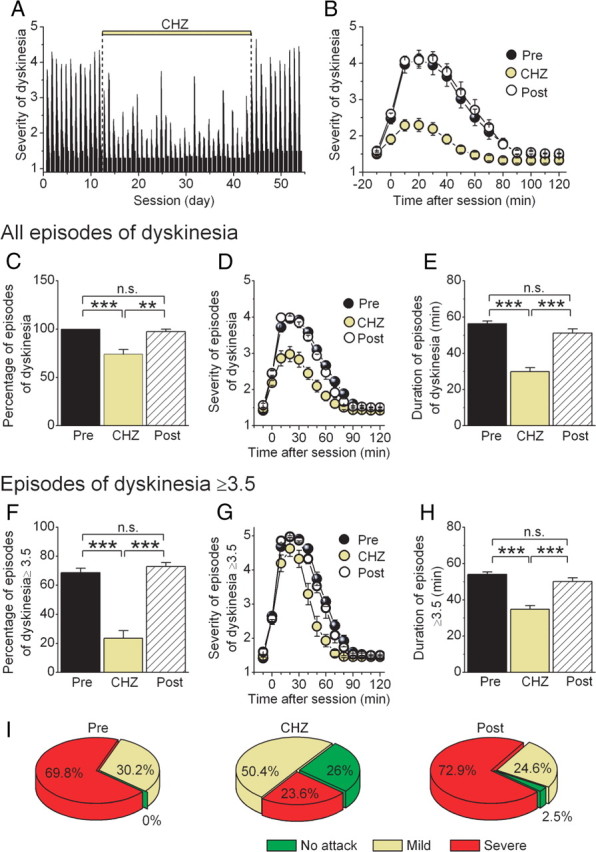Figure 4.

CHZ treatment reduces the frequency and severity of the stress-induced episodes of dyskinesia in tg/tg mice. A, The attacks of dyskinesia triggered in tg/tg mice as a consequence of the stress associated with the daily rotarod sessions were quantified in 10 min intervals for each session. A score of 0 denotes normal behavior, whereas a score of 5 corresponds to severe dyskinesia. During the treatment with CHZ, the average score was significantly reduced. B, The average severity of dyskinesia before, during, and after treatment with CHZ in the tg/tg mice shown in A. C, The average probability that the rotarod paradigm resulted in an episode of dyskinesia regardless of the severity of the attack. **p < 0.01, ***p < 0.001 (one-way ANOVA, followed by Bonferroni's correction). n.s., Not significant. D, The average severity of all attacks of dyskinesia before, during, and after treatment with CHZ. E, The duration of the attacks of dyskinesia shown in D. ***p < 0.001. n.s., Not significant. F, The average probability that the rotarod paradigm resulted in severe episodes of dyskinesia (dyskinesia score ≥3.5). ***p < 0.001. n.s., Not significant. G, The average of only severe attacks revealed a significant shortening of the duration of such episodes during the treatment with CHZ. The graph depicts the progression in severity from before the rotarod session up to 120 min after. H, Average duration of severe episodes of dyskinesia. ***p < 0.001. n.s., Not significant. I, Summary results on the efficacy of CHZ in increasing the frequency of sessions in which tg/tg mice were free of symptoms (no attack) and correspondingly increasing the frequency of sessions in which they had an episode of dyskinesia with a score <3.5 (mild) or one with a score ≥3.5 (severe).
